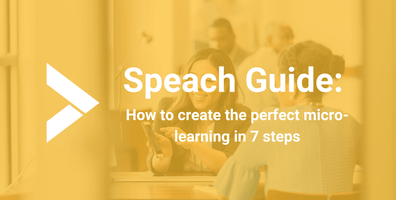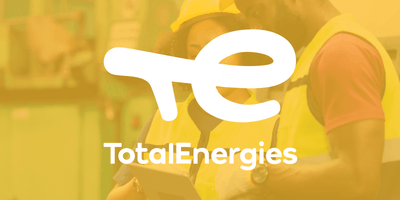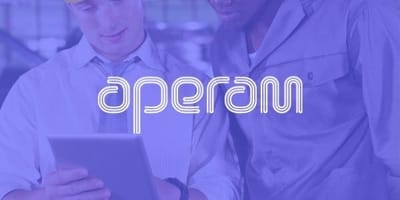For a company to find, hire, and train a replacement for a mid-level employee, it would cost approximately 150% of that employee’s annual salary, and for senior-level team members who may specialize in certain fields such as venture capital or private equity, that cost jumps to 400% of their annual salary. While employee turnover is a challenge for all organizations, many organizations are already adopting a new approach to improving their overall employee retention rate: video-based onboarding.
By improving the onboarding process, companies can craft a better environment for employees throughout their time at the firm by starting with the moment they are hired. To learn more about why leveraging interactive How-To video in the onboarding process can improve employee retention and build strong, reliable teams, check out the information below.
Showing New Hires Their Importance
Nothing can disconnect an employee with their new place of work faster than the feeling that they aren’t valuable, and when a company doesn’t put forth the resources necessary to create a high-quality onboarding experience for new hires, it sends the message that your organization doesn’t care about them enough to dedicate those resources. With the right solution, you can create professional quality video content that can be used to enhance onboarding, providing your new hires with not only a more engaging learning experience but also a collection of information that they are free to access and reference at any time, so they will always have the tools that they need to do their job effectively and efficiently. Micro-training video solutions make new video content easy to create and distribute to your employees, so your new hires will always be able to get the most recent and relevant information that can prepare them for the challenges they’ll face in their new role.
The Adaptive Training Approach
A key element to any good training program is the ability to adapt to different types of learners. You may have new hires that will absorb information best if they get to read through a wealth of text or analyze images and graphics, while others may learn best in a collaborative group setting, watching others perform an action, or by trying out certain actions and tasks themselves. With a video onboarding presentation, you can now offer something to all of these types of learners, allowing you to combine elements such as graphics, text annotations, audio, and much more. This makes your organization’s training process more adaptive, as a wider range of learners now have the information presented to them in the form that they prefer.
As an example, let’s say that you just created a How-To training video to show a new employee joining the mergers and acquisitions team how to understand the basics of financial modeling and best practices for building a simple one in Excel. With narration audio present in the video that walks the viewer through each section, you’re catering to the auditory focused learners. By enhancing the video with annotations or captions that put the audio narration into a text format throughout the video, you appeal to the visual learners who are able to retain the information best by reading the text and seeing the financial model come together.
Breaking the video down into simple chapters, you help learners organize the information while encouraging them to follow along and try it for themselves if they prefer. Finally, since the video is available anytime and anywhere, learners can watch and discuss the video in a group setting or watch it on their own time and at their own pace. By creating a training experience that caters to as many types of learners as possible, your new-hires are more likely to have a positive experience during the onboarding stage that they will carry with them into the later months and even years of employment.
Reducing The Cognitive Stress Of Training
Cognitive stress is the effort we put into understanding or absorbing new and complicated information. If it’s something simple like learning someone’s name, the cognitive stress level is low, but for understanding complicated banking concepts and best practices as a new hire, the cognitive stress can be high. Unfortunately, humans are hardwired to avoid cognitive stress as much as possible, instead seeking out the most efficient and stress-free approach to obtaining the information that is deemed necessary. Training programs that don’t effectively simplify the information or organize it in a fashion that is easier to understand, will typically result in newly trained employees retaining very little of the information they were just presented with, leaving them unprepared for the trials that accompany their new job.
The natural solution to reducing cognitive stress during the learning process is to use video, which is actually processed 60,000 times faster than other formats such as text. While you may think that video has a greater amount of information that needs to be absorbed between the collection of various visual and auditory stimuli, what makes video reduce the amount of cognitive stress is the fact that the viewer is taking a passive role in the learning process.
When a new hire going through onboarding reads through a text-heavy training guide, their brain needs to actively process every word, sentence, and idea that they read through to effectively comprehend it, resulting in a high level of cognitive stress. With a video that presents the exact same information as that text-based training guide, the trainee is presented with a variety of stimuli that their brain can select from based on their learning preferences, piecing together a more complete understanding of the material. Looking at information retention by the numbers, new employees retain approximately 95% of the information presented in a video, compared to a mere 10% of the information that they read in text format. Armed with more information, your new employees are more likely to feel prepared to start their new job and help them feel more comfortable at the organization.
Maintaining Deeper Levels Of Engagement
While managing the amount of cognitive stress that your new-hires face during training is already a challenge, keeping them interested and engaged in the process is another barrier that learning and development managers must overcome. Engagement plays a big role in the realm of information retention for new hires, meaning the more engaging your company’s training program is, the better your employees will perform in their role and the more comfortable they will feel at the company. The good news is that just like with the case of cognitive stress, video is a perfect solution for improving engagement levels for new employees during onboarding.
One of the most important factors to consider when trying to maintain employee engagement during the start of their tenure at your organization is the pacing of training. If the pace is too slow, your new hires will quickly become disinterested and tune out, but if the pace is too fast, they will be left scrambling and failing to retain large portions of valuable information while they simply try to keep up. With an onboarding strategy that is built around a micro-training video solution, you not only ensure that the pacing of training is always consistent, but you also give your new hires more control. While they may watch the video once during their initial training, they can always go back to access the video later and watch it as many times as necessary to absorb every bit of vital information.
Another way in which video further boosts the engagement of your new hires is a phenomenon called the “mirroring effect”. Simply put, when a person watches a video of someone performing an action, the viewer feels as if they are performing that action. For example, watching a video of someone running will give you the feeling that you were also running without having the physically taxing effect on your body. While most of the time you may not notice the mirroring effect, the subtle sensation is something that will keep you engaged with the video, while also improving the rate of information retention for many learners.
Just like a video of someone running, the mirroring effect can take place for anyone watching a training video for creating a financial model, giving your new hires the feeling that they are following along and putting the model together themselves and getting hands on experience, even though they are just watching a video.
Enabling Long Term Success
What separates good onboarding from great onboarding is how far it goes beyond the initial training. Providing your employees with high-quality information resources during their first few weeks into their new job will create a strong foundation of knowledge, but that foundation is not everlasting. Months and years down the road, that foundation can start to become shaky, as your employees fail to retain some of those crucial bits of information that they learned long ago during their onboarding, or the information that makes up their foundation becomes outdated.
With an interactive How-To video solution, your onboarding library becomes a long-term information repository that your team can access anytime, anywhere, and on any device, so they can get the information they need to keep that foundation of knowledge strong. With easy video creation and seamless sharing, your company can even send out an update regarding best practices, a groundbreaking strategy, or an adjustment to a previous video that was missing information to your entire team, from new hires to senior employees, making sure that outdated information never becomes an issue.





